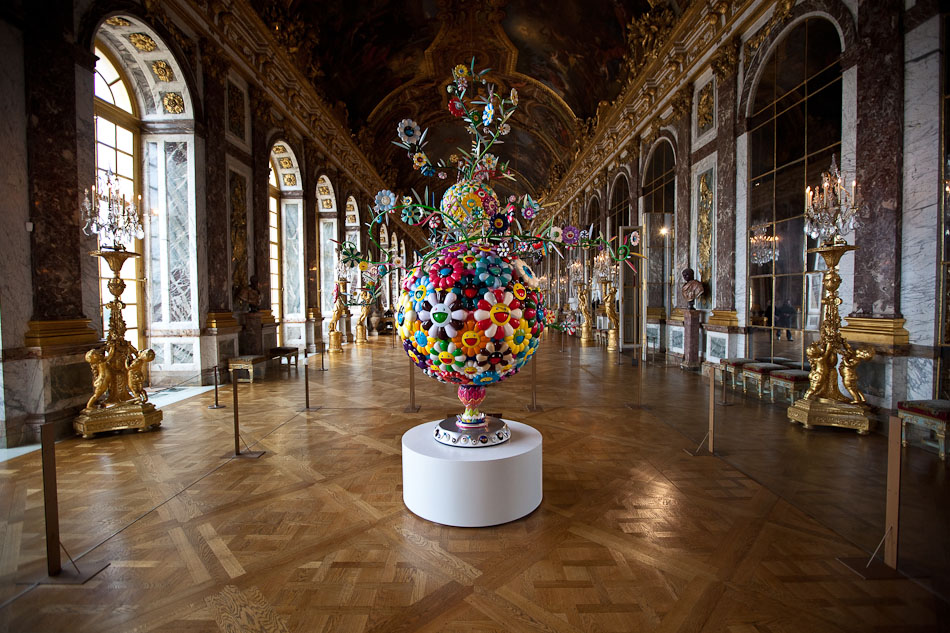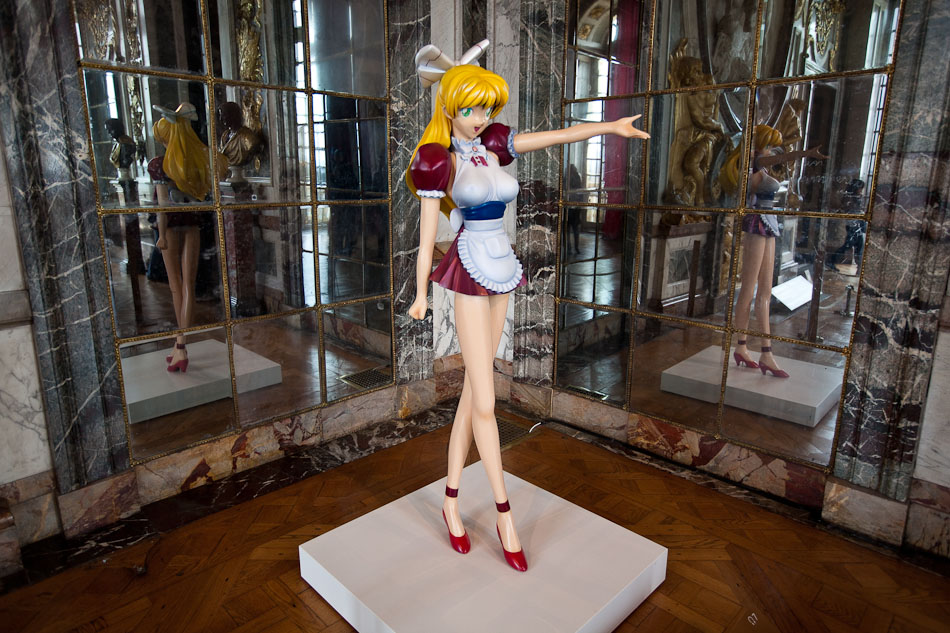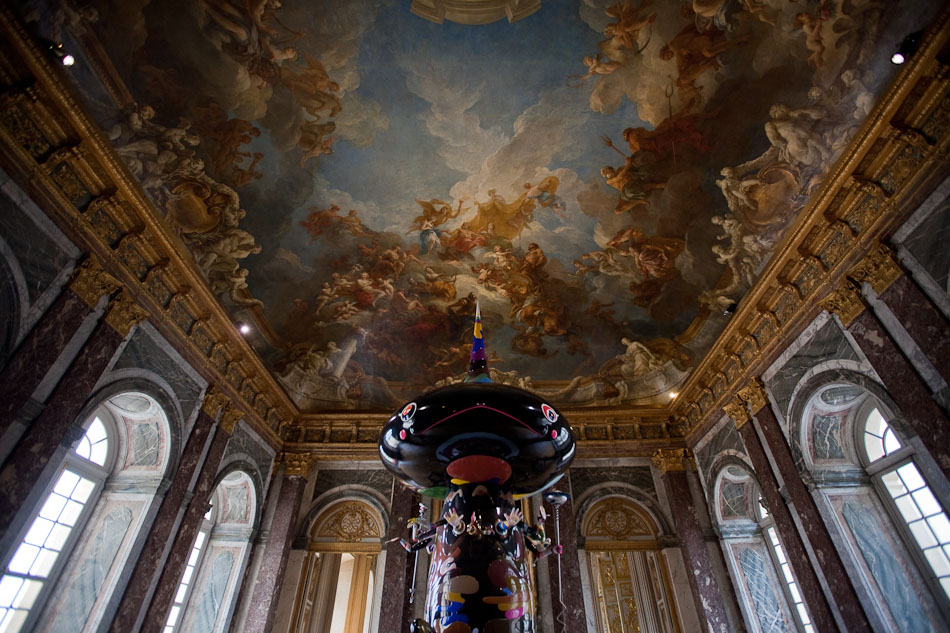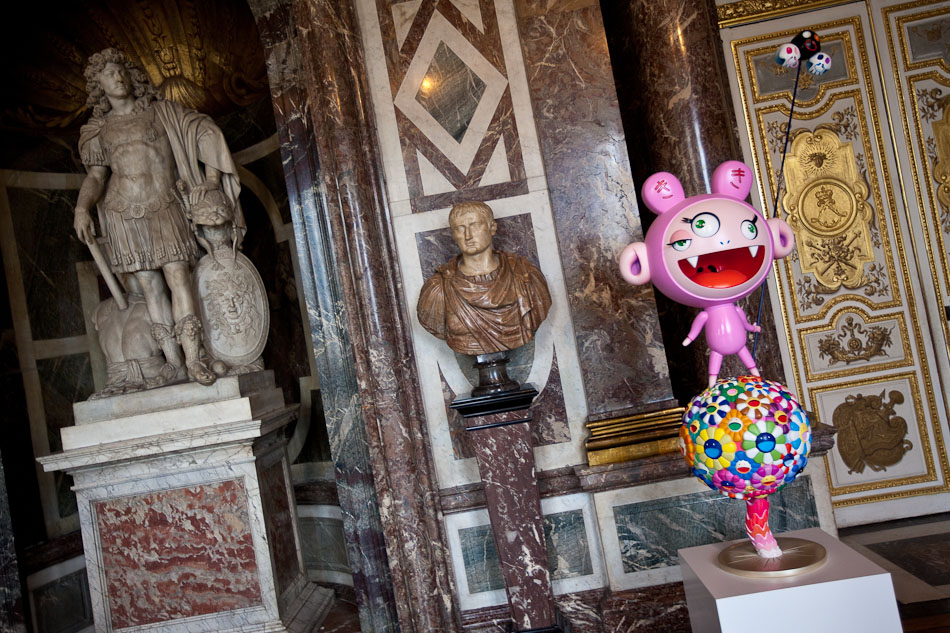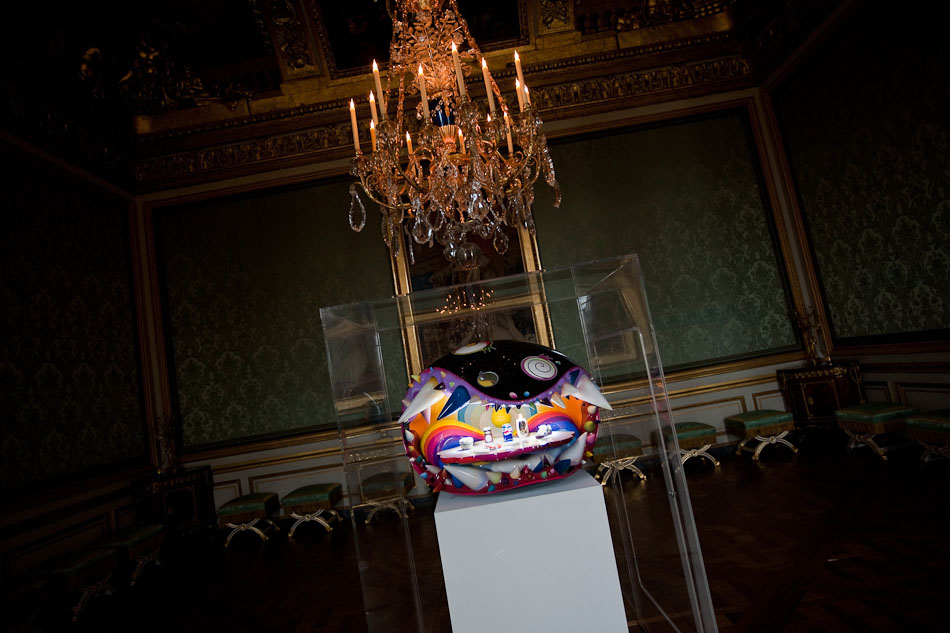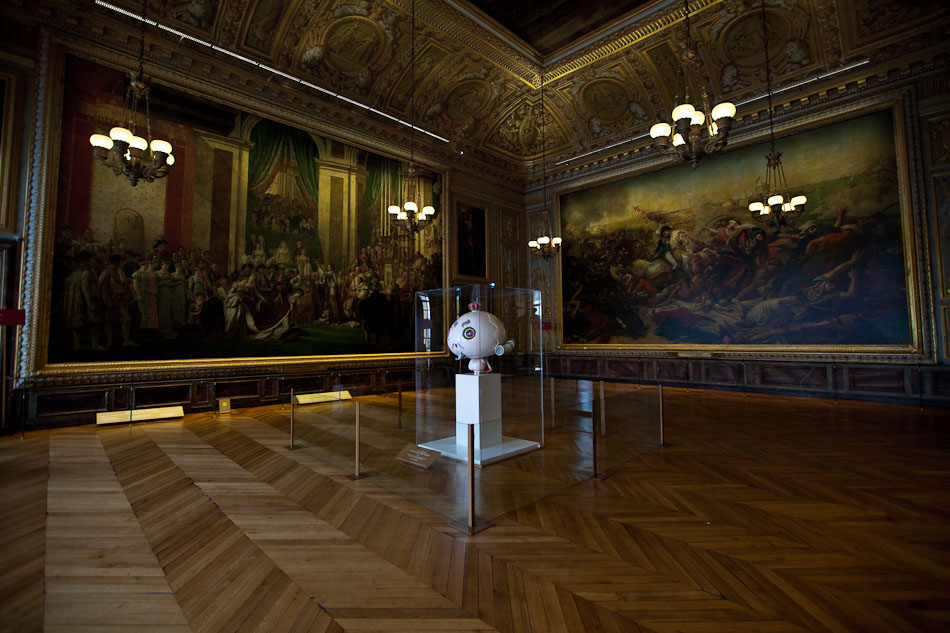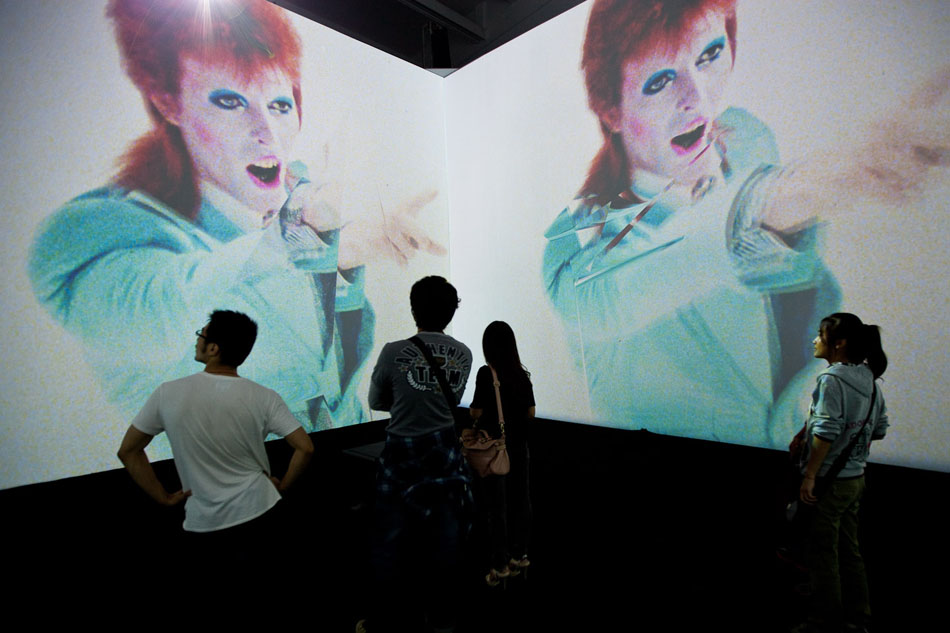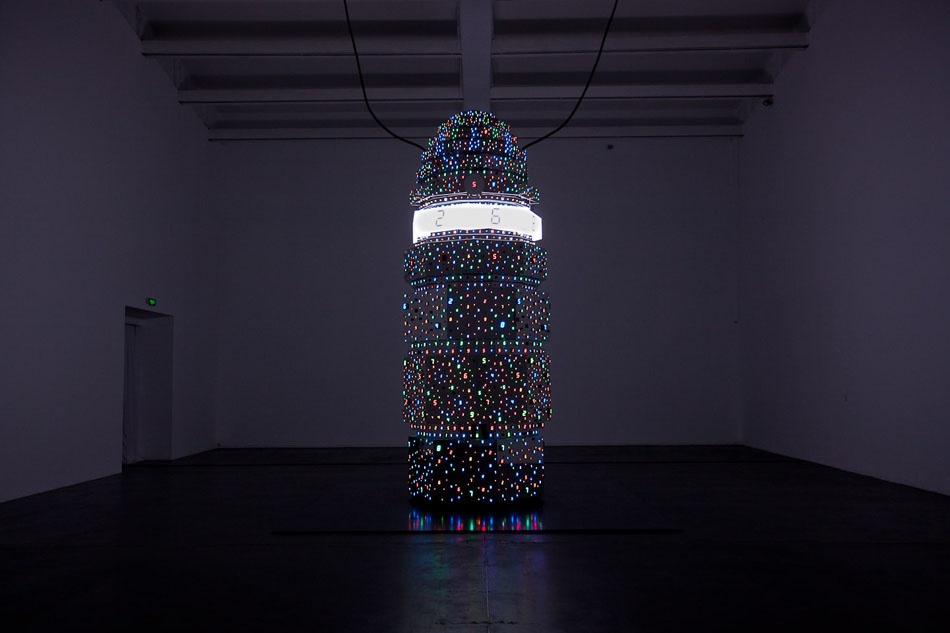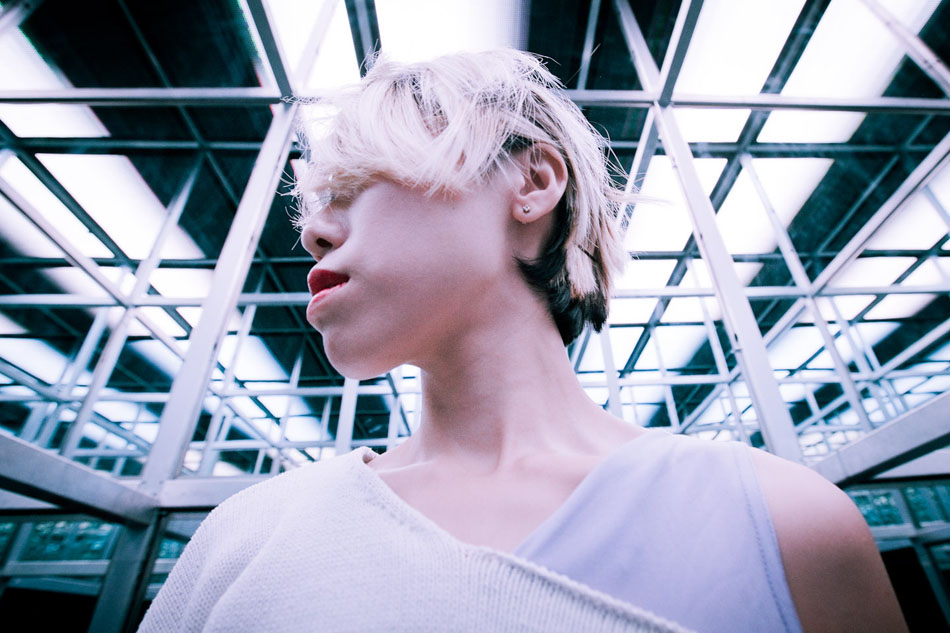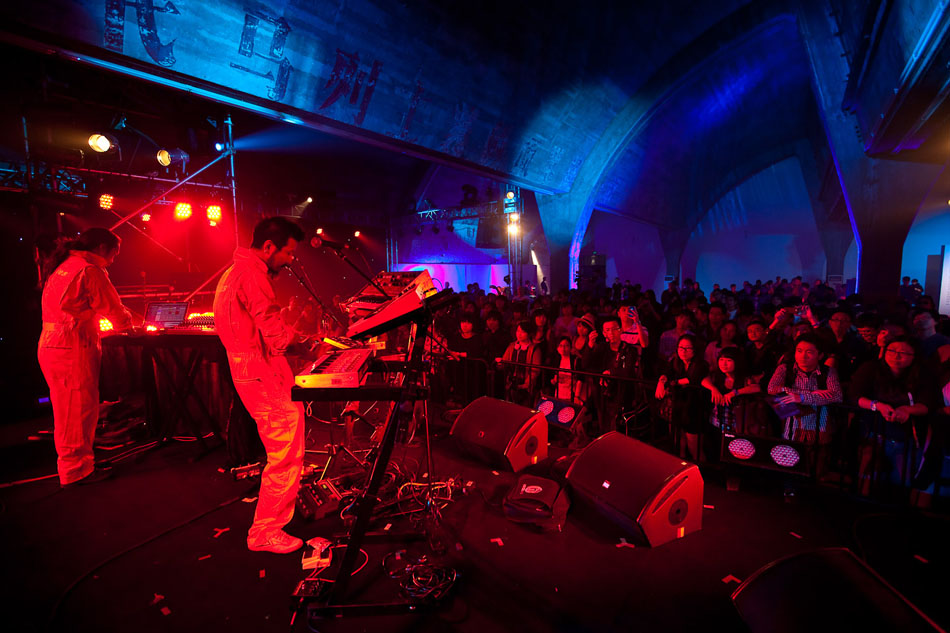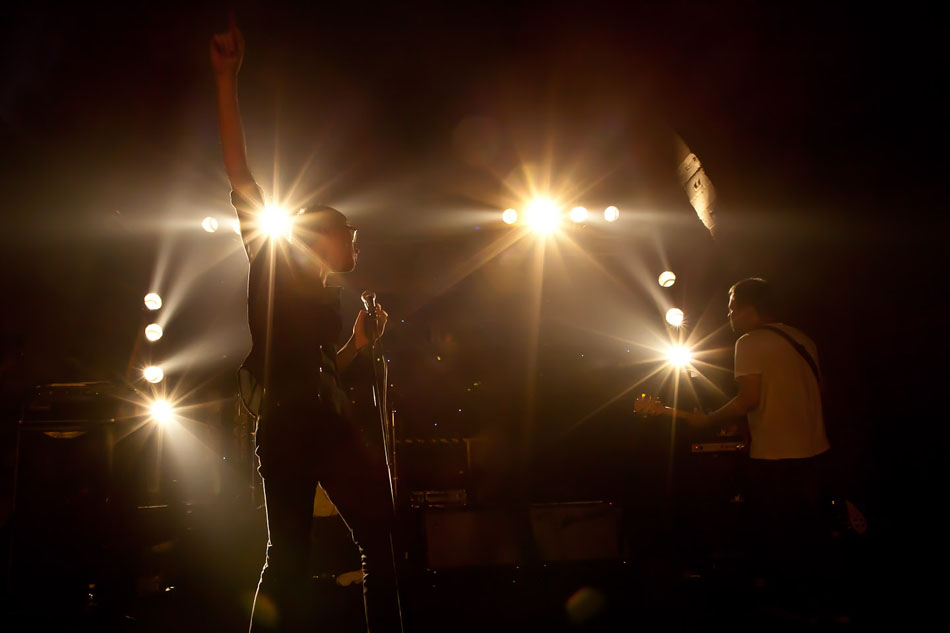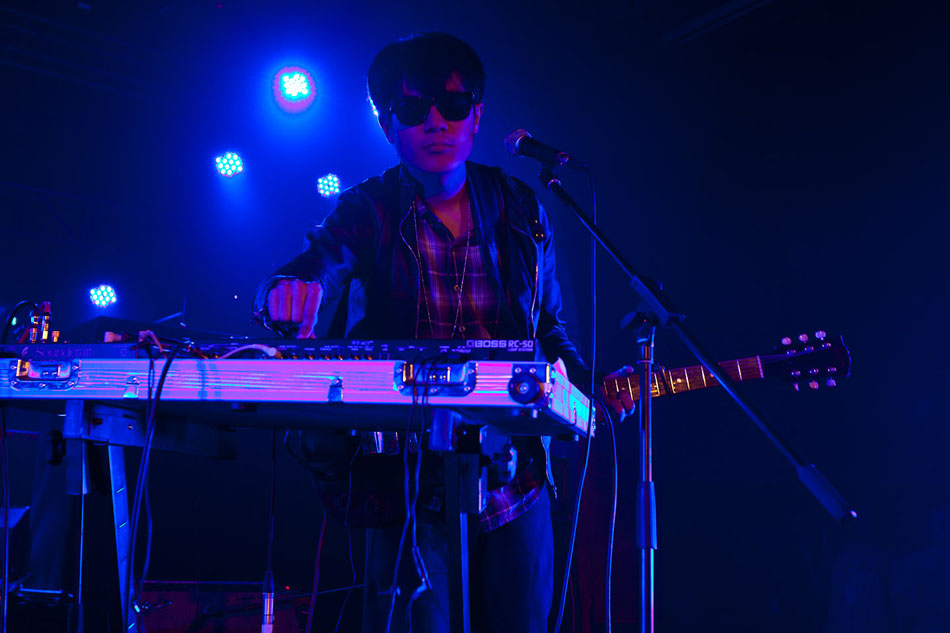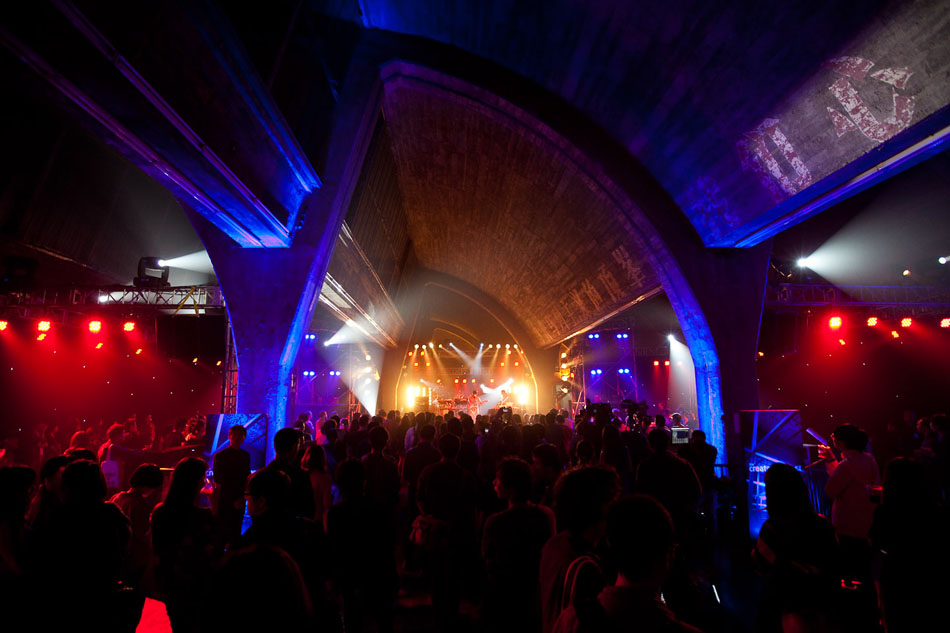Mar 19, 2012 | Art, Development
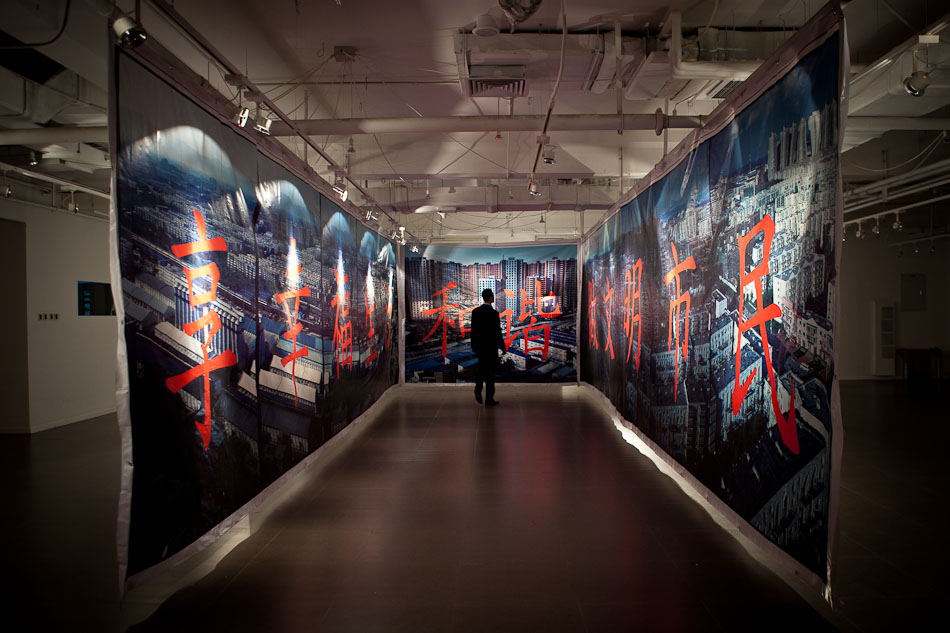
Check out my newest creation. This incarnation of Visions of Modernity examines the “harmonious” transformation of Beijing by recreating propaganda banners espousing “modern” and “civilized” lifestyles. Unfortunately such optimistic rhetoric does not always reflect the current state of urban planning. Megablocks dominate infrastructure surrounding Beijing’s medieval core. Huge swaths of land are handed over to developers and fashioned into towering residential high-rises interwoven with retail and public spaces. The photographs on the tarps depict some of the largest developments in the city. Once constructed, megablocks form distinct urban islands, bounded by grand avenues and further hemmed in by ring roads. Any sense of fluidity within the urban fabric is lost. Entire districts are laid out and rebuilt in such a fashion – like cogs in a machine switched out for newer parts.
As the imposing and monotonous facades of megablocks become the norm, they also reshape the manner in which people live and consume by encouraging social atomization in Western-style apartments. Global commerce immediately took notice of this elaborate transformation of cultural identity. With an increasingly materialistic China in its sights, Ikea opened in Beijing what was at the time its single largest outlet in the world. The compartmentalized lifestyles Ikea put on sale catalyzed a new range of communal practices that are represented in the photographic dioramas attached to the tarps. These Ikea showroom interiors perfectly fit the megablock mold even when unsustainable in nature if implemented throughout the rest of China. There is now a substantial gap between the “modern” and “civilized” vision of Beijing found on banners plastered around the city and how it is actually manifesting in daily practice. Any sense of harmony remains elusive in the midst of this developmental explosion.
For this installation I strung together tarps measuring up to ten meters in length to create photographic corridors of urban landscapes emblazoned with actual propaganda messages used by the Beijing municipal government. Small holes are then cut into particular buildings on the tarps that reveal photographic dioramas of Ikea lit by a single bulb. The size of the installation can be adapted to fit almost any space. In the future I would like it to cover entire buildings. All photographs were taken in Beijing. Check out the video below for a better feel.
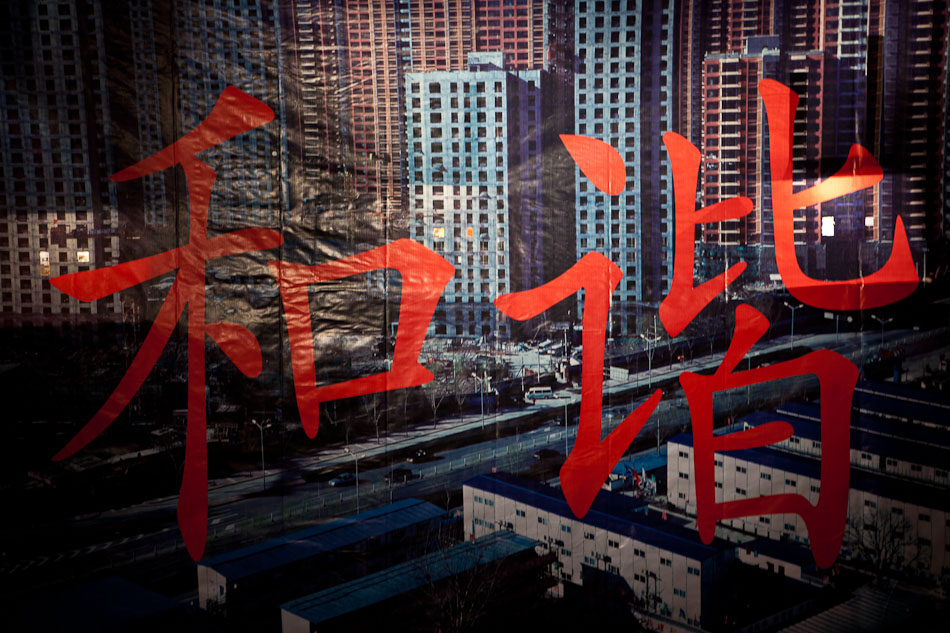
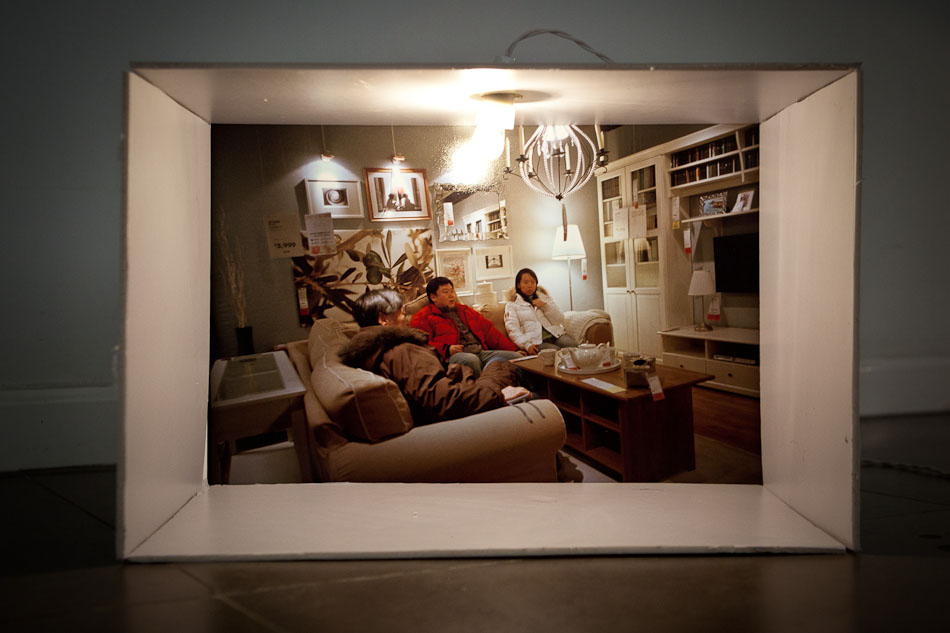
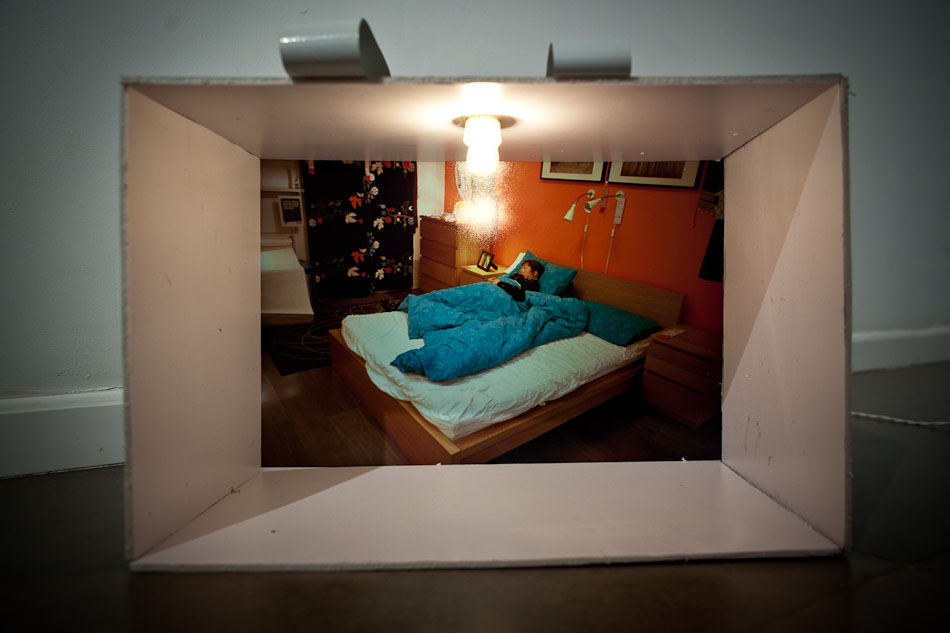
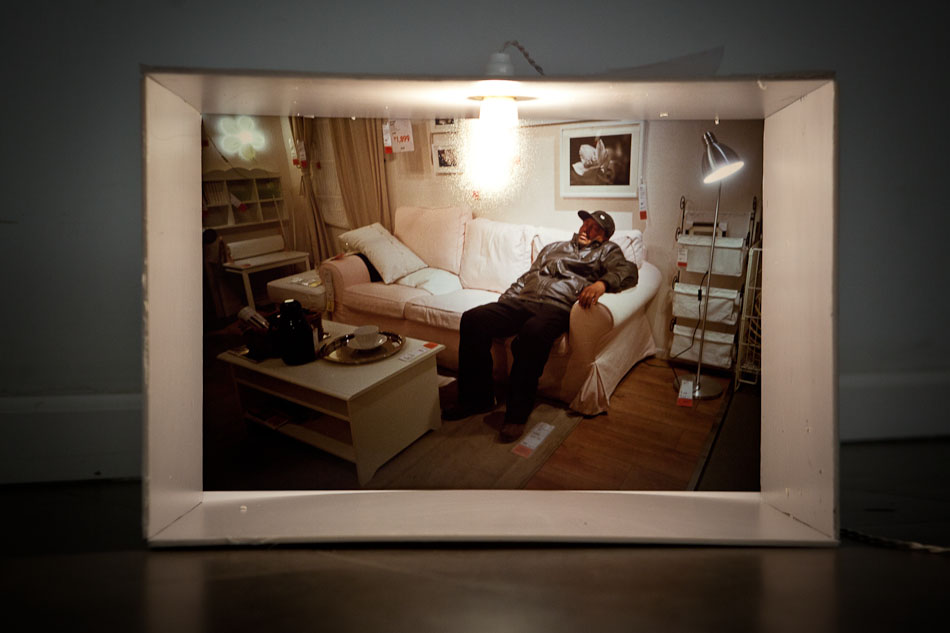
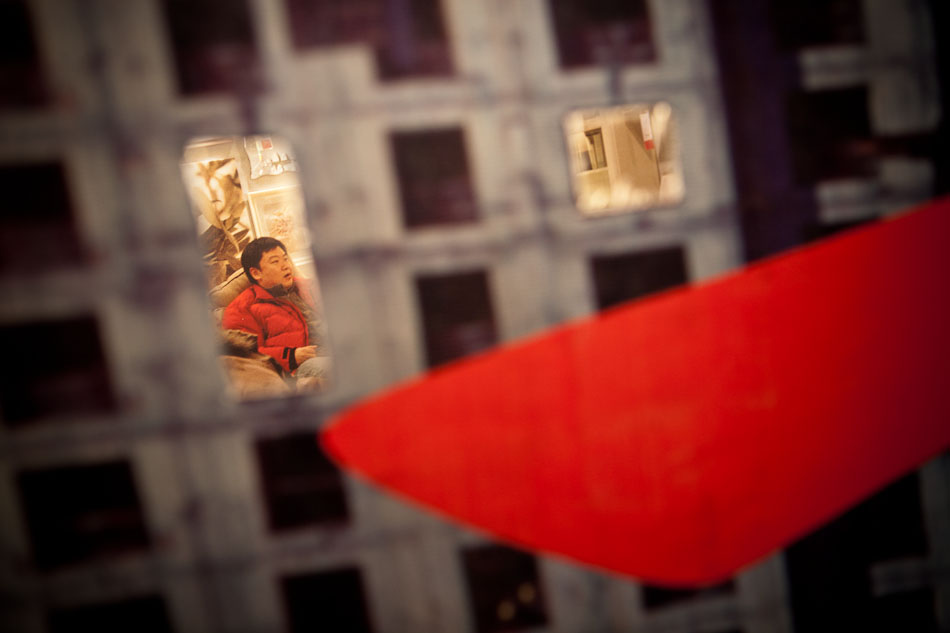
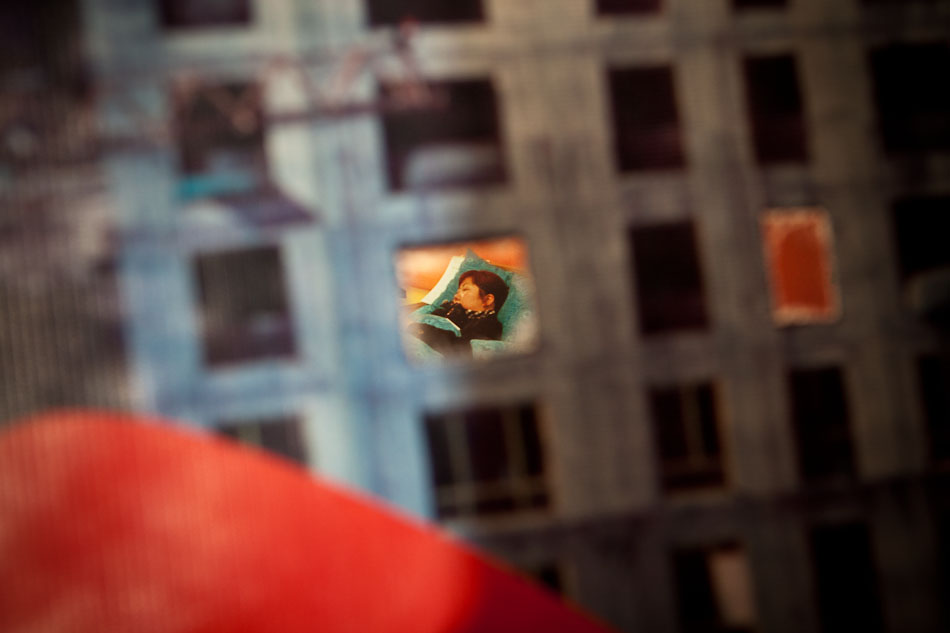
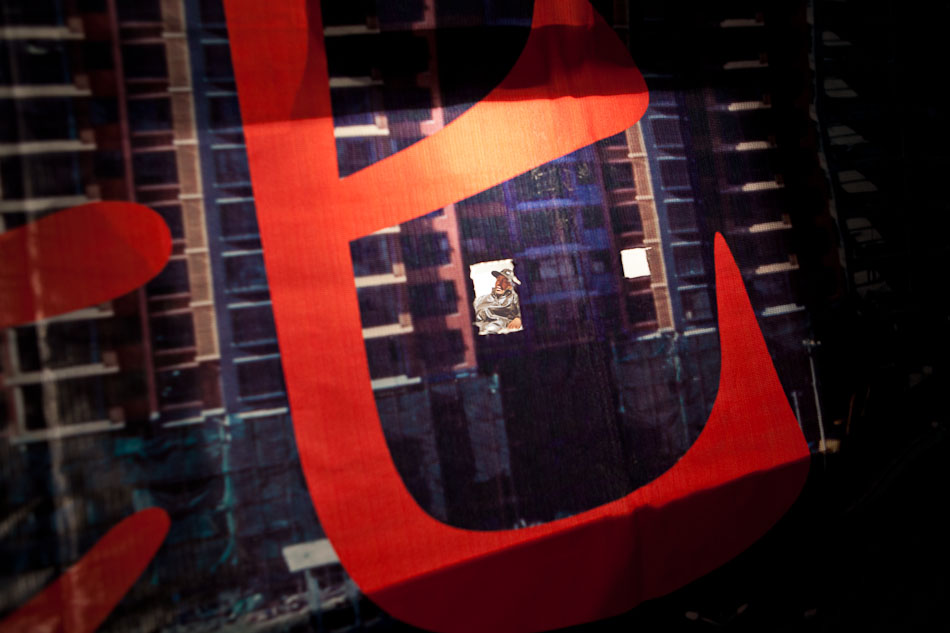
Nov 21, 2011 | Art, Music
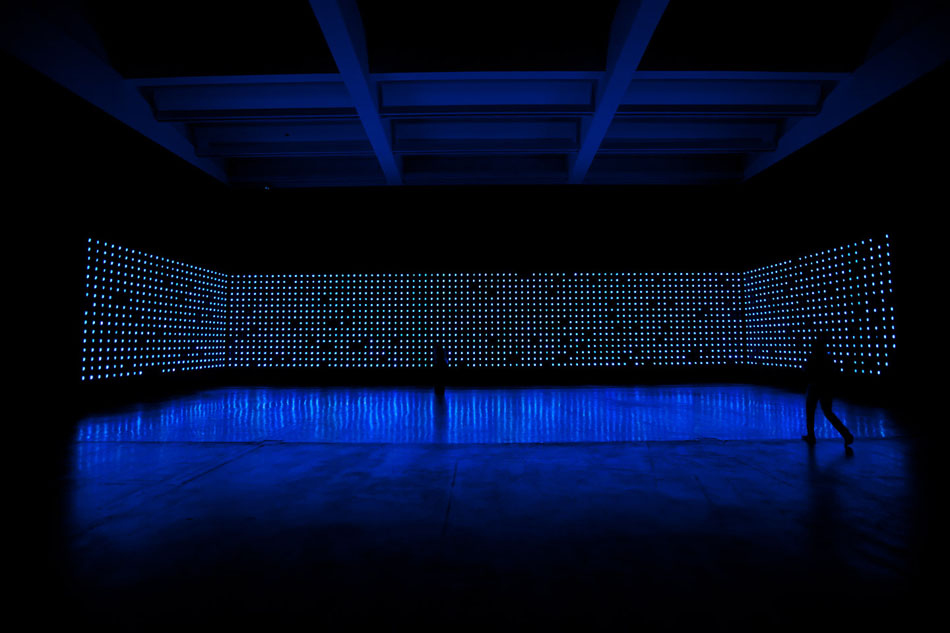
The Creators Project is one of the best live multimedia events to come to Beijing. Curated by Vice through an unlikely Intel partnership, this year’s second installment took over UCCA with massive art installations along with an evening of performances from an impressive roster of bands and solo acts. The Creators Project really provides an important platform for international interchange between artists, designers and musicians. Their dedication to the Beijing scene is also growing every year and helped arrange New Pants’ appearance at Coachella and also flew out Queen Sea Big Shark for the Creators Project event in New York City. The video below features installation pieces by Mick Rock and Barney Clay, Joao Vasco Paiva, United Visual Artists and Tatsuo Miyajima. I am already looking forward to next year.
Jul 20, 2011 | Art, Youth
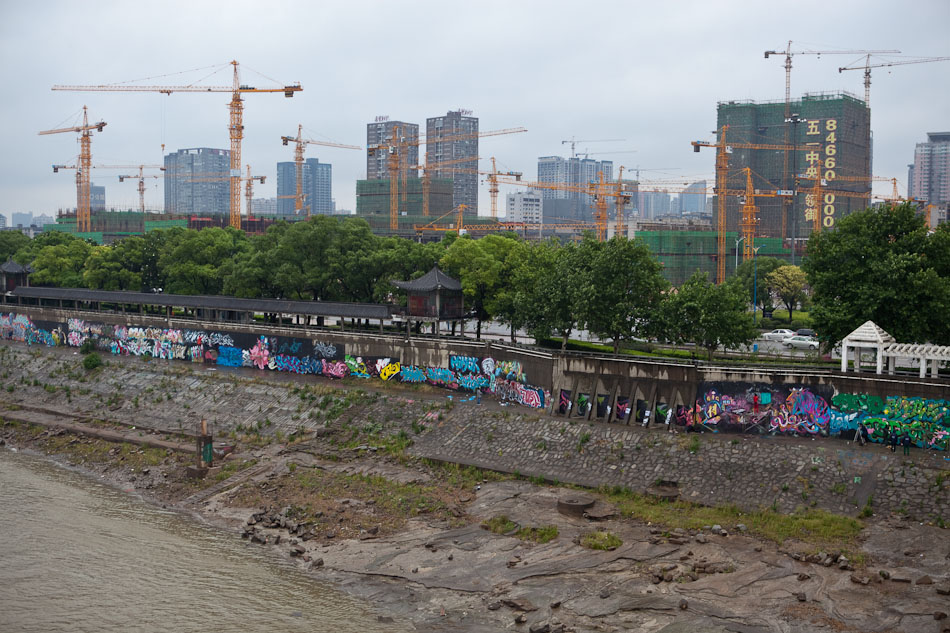
I am back in New York for the next month starting my MFA Art Practice program at the School of Visual Arts, so excuse my delays in posting new material. After shooting Han Han for the New Yorker I was able to escape to Changsha to witness the Meeting of Styles graffiti gathering. Over a hundred graffiti artists from all over China congregated in the city that once witnessed Mao Zedong’s conversion to communism. Street art in China is still in a very nascent stage, so I was greatly impressed by the wide variety of styles on display smack in the middle of Changsha’s waterfront. Quite frankly I was a bit surprised the local powers that be even approved a graffiti event of this scale in the first place. The artwork ran for hundreds of meters, stretching out from either side of the Xiangjiang River No.1 Bridge – a major transportation artery in Hunan’s capital. The video below walks you through the core of the murals created during the Meeting of Styles. I met a ton of really interesting graffiti artists while in Changsha who I will be following up with individually across China.
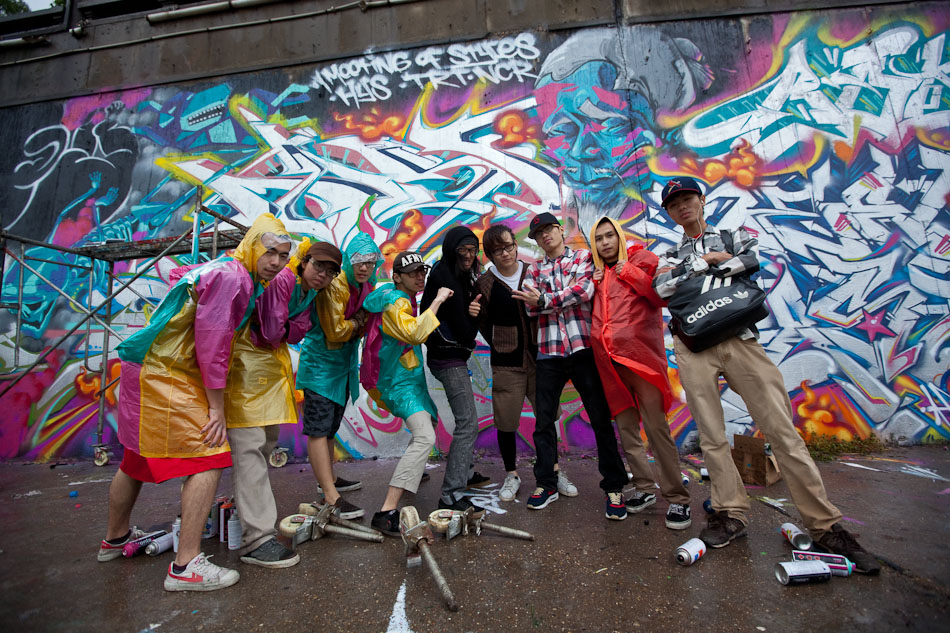
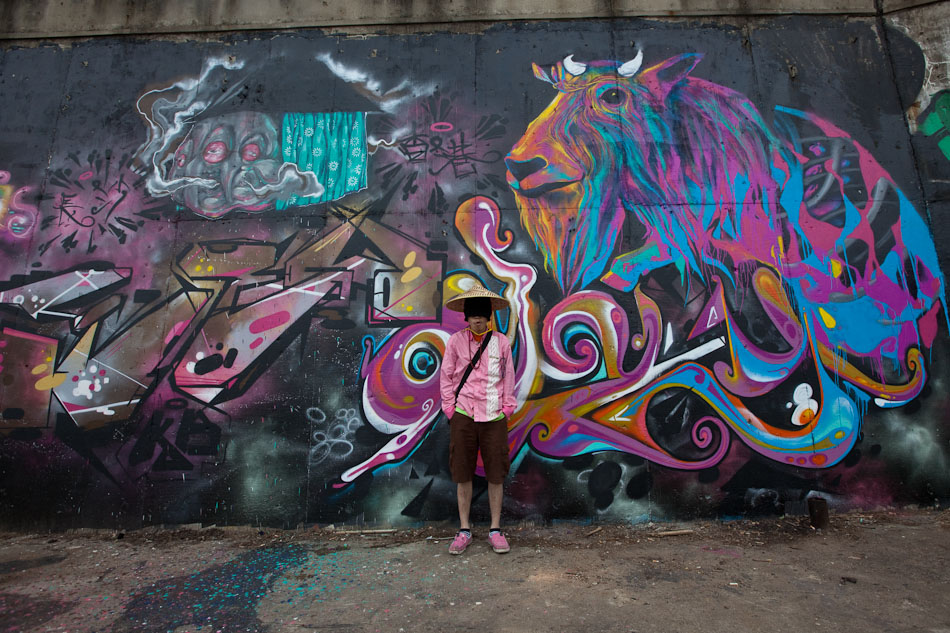
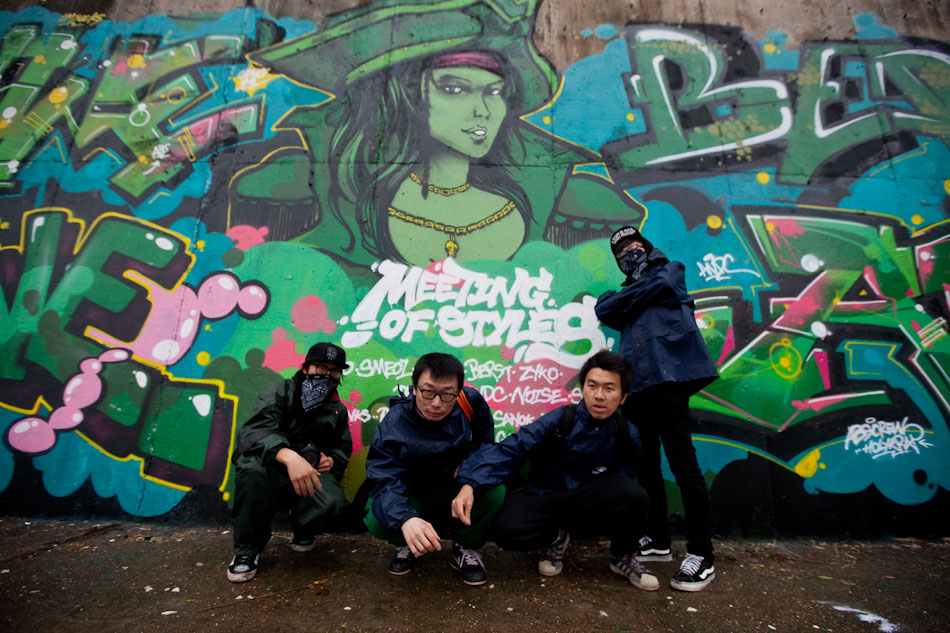
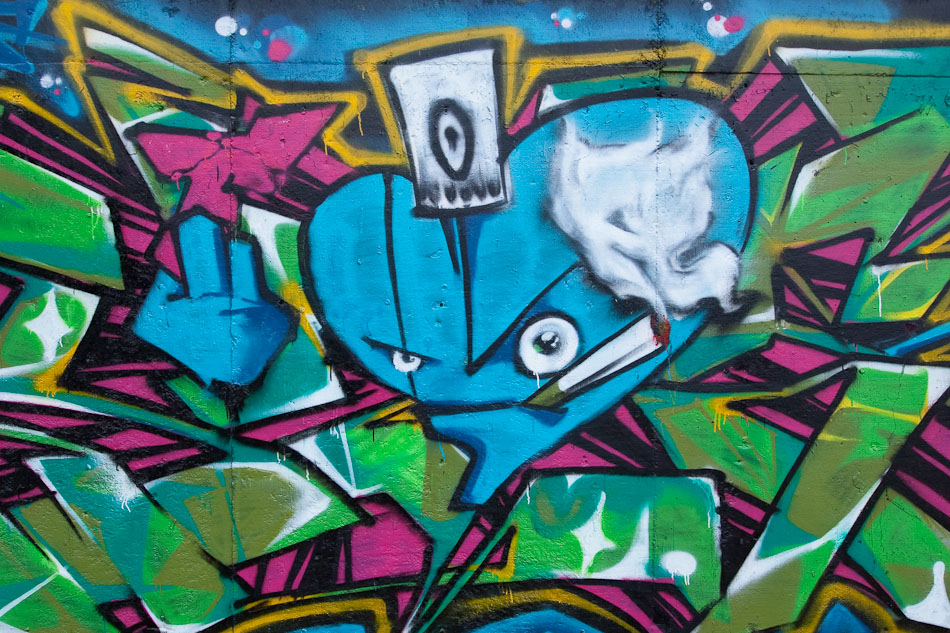
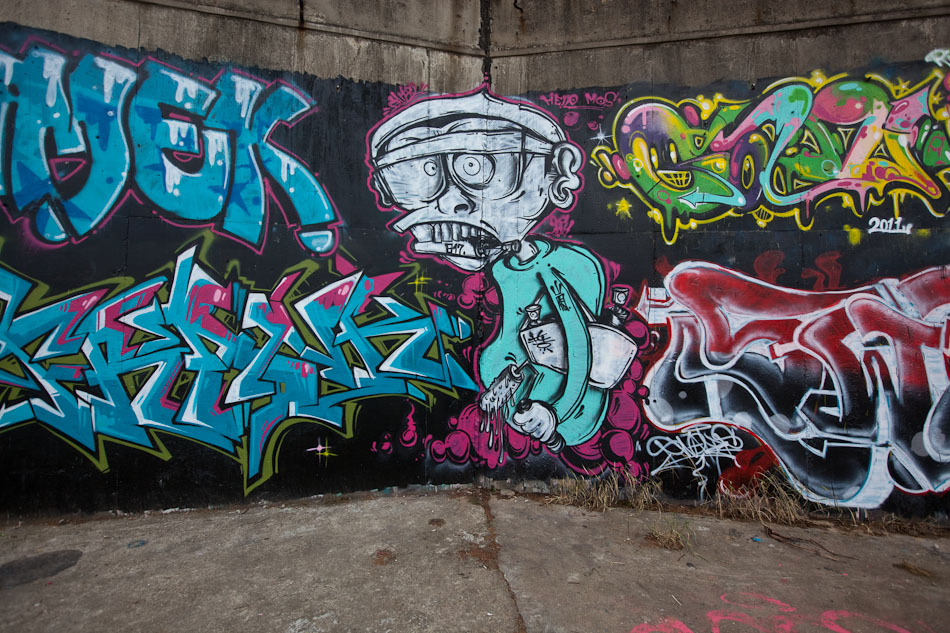
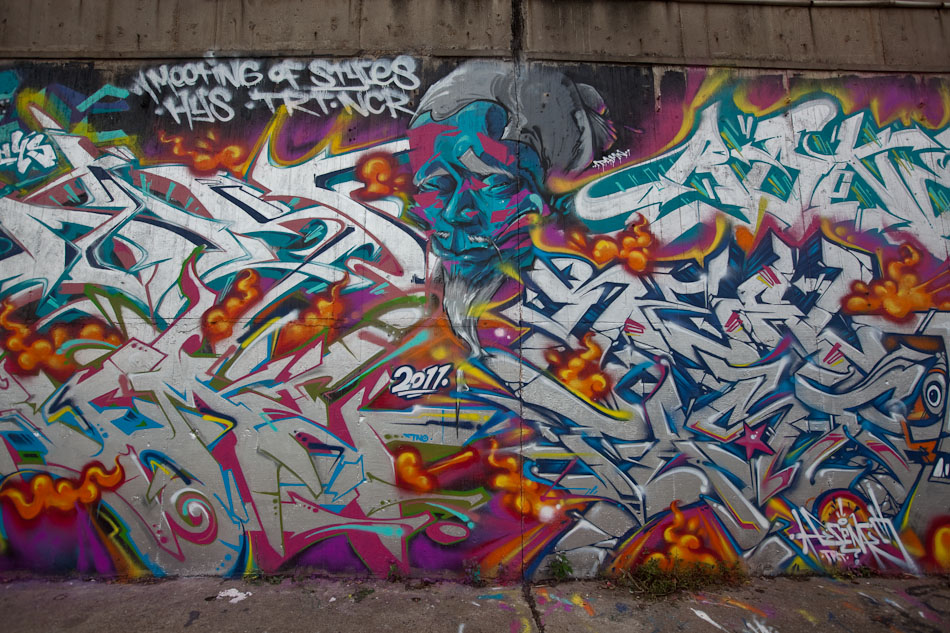
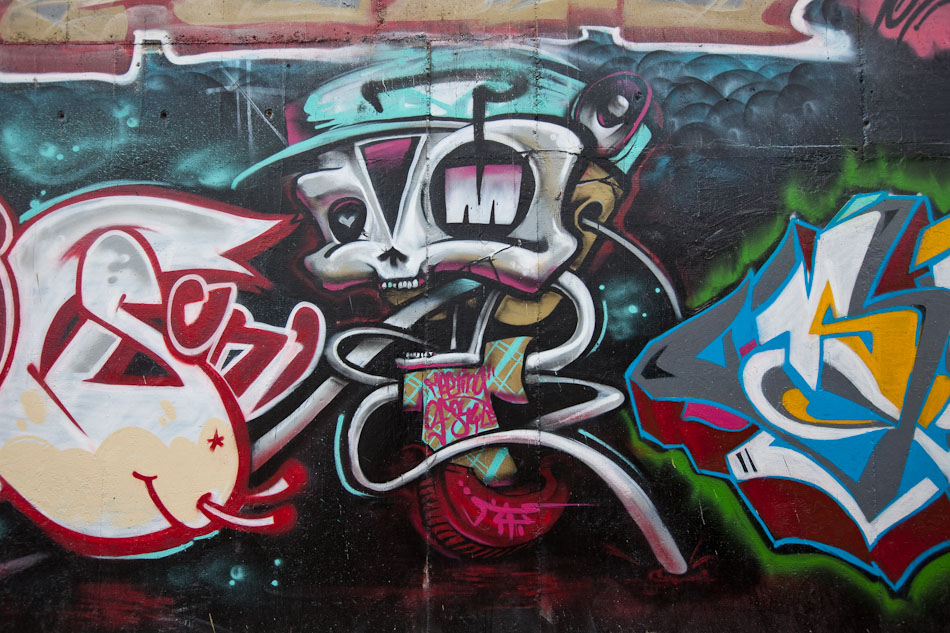
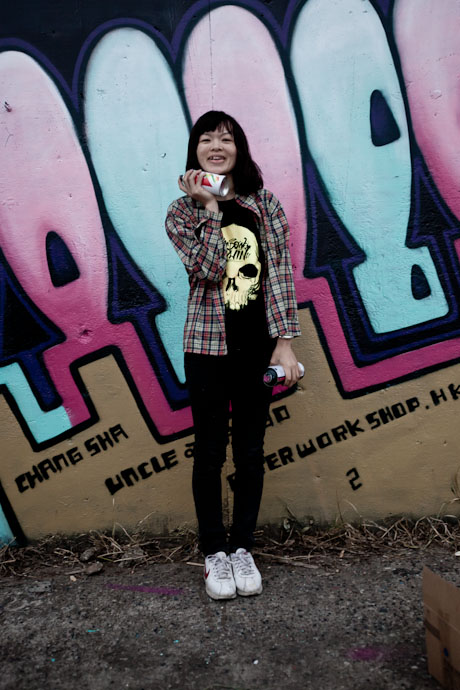
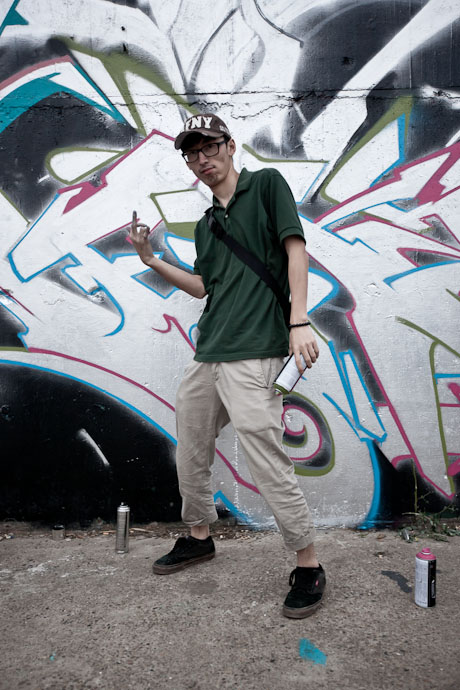
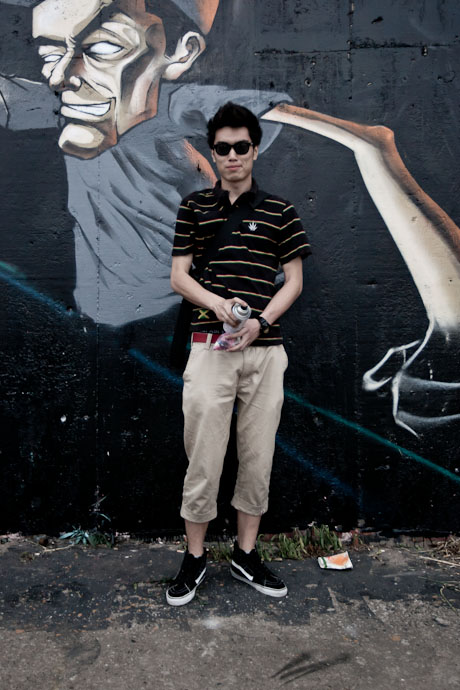
Apr 8, 2011 | Art, Travel
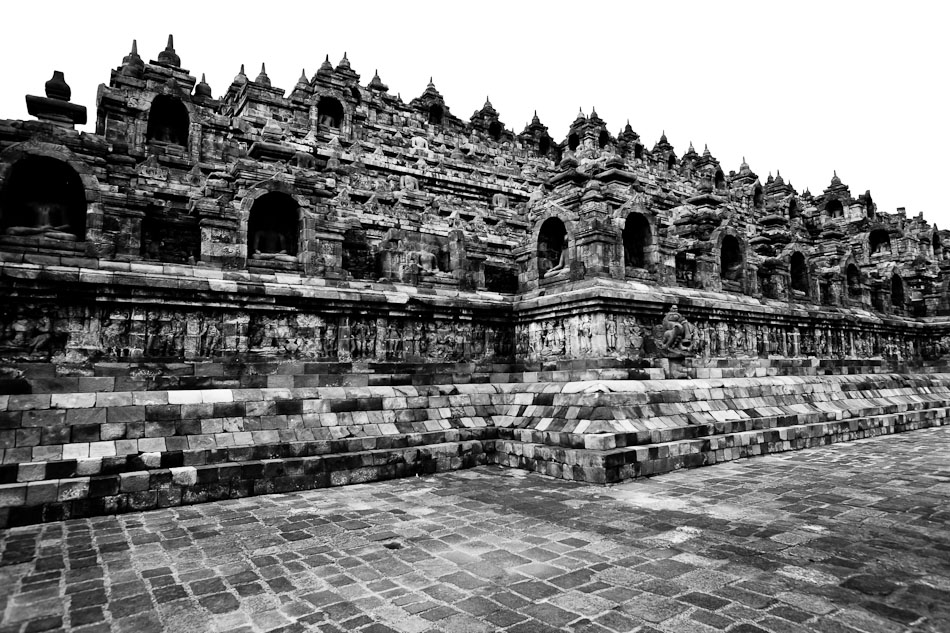
My trip to Indonesia in February was not all hardcore concerts and overnight buses. I was fortunate enough to take a day or two off from touring to check out some of the country’s cultural splendor. For years I wanted to visit the 9th-century Buddhist monument, Borobudur. Over the past decade I have been able to photograph most of the great Buddhist archeological sites in China, Mongolia, Nepal, India, Bhutan, Burma, Thailand, Laos and Cambodia. Borobudur surely ranks as one of the most celebrated and lived up to many of my expectations, even if it did not quite match the scale of Angkor Wat or Bagan. Still, the massive pile easily exhibits some of the greatest relief sculpture in Southeast Asia. The 2,672 panels that wind their way to the top stupa intricately depict mythological stories as well as scenes from daily life. It is not often you get the chance to peer back one thousand years into the milieu of an ancient civilization. Check out some of the pictures below to see the depth and detail of their work. They were truly exquisite.
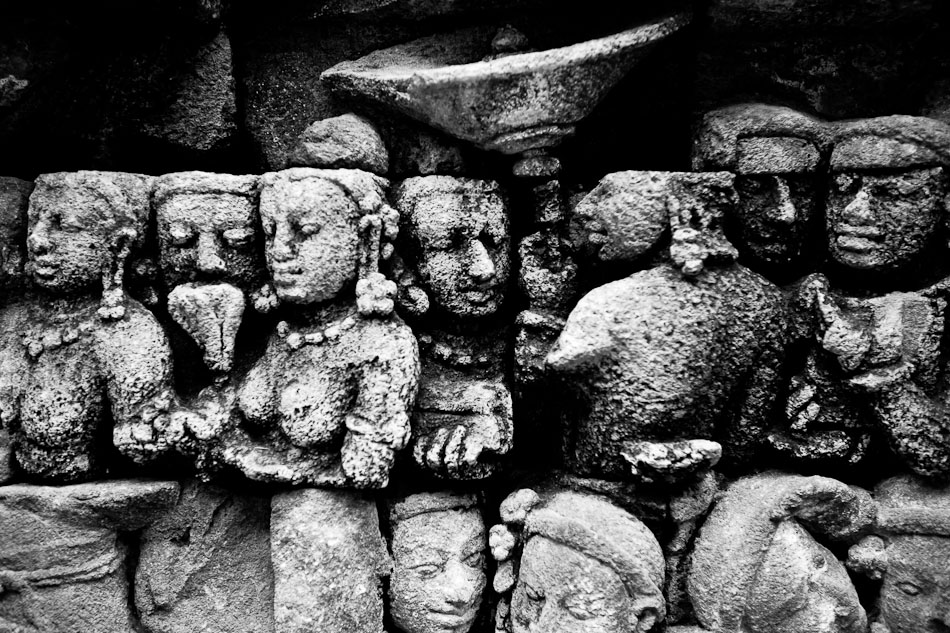

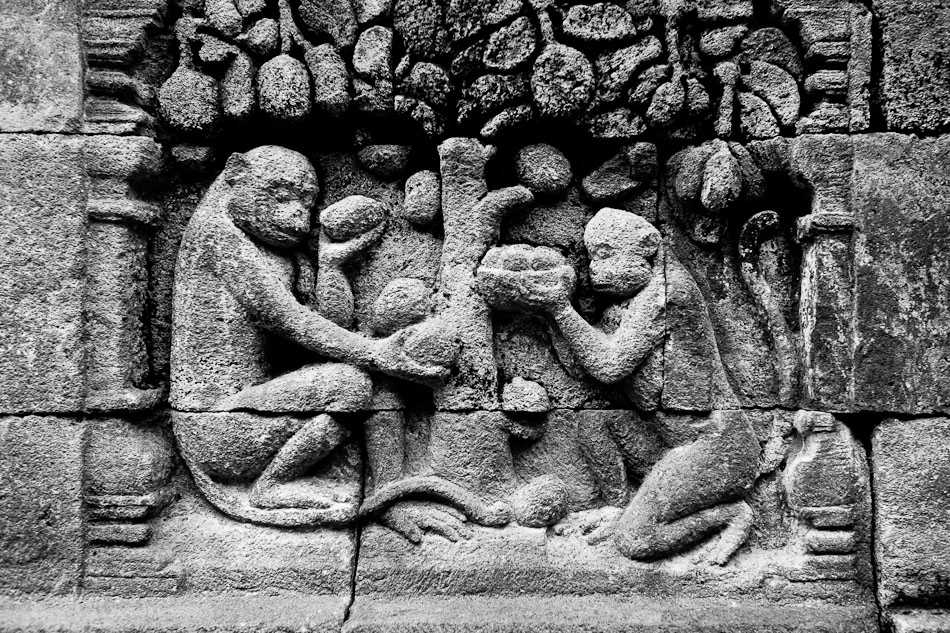
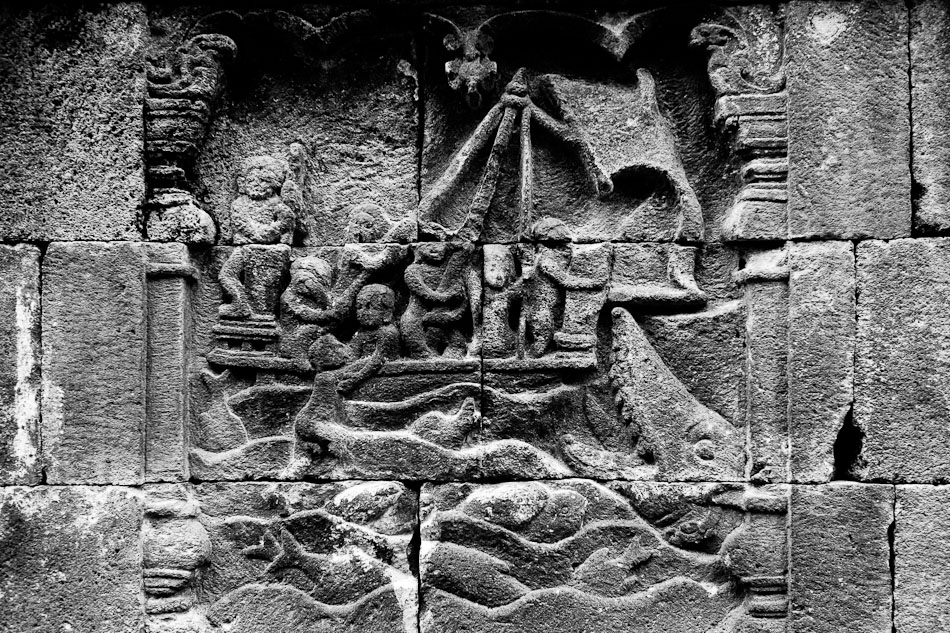

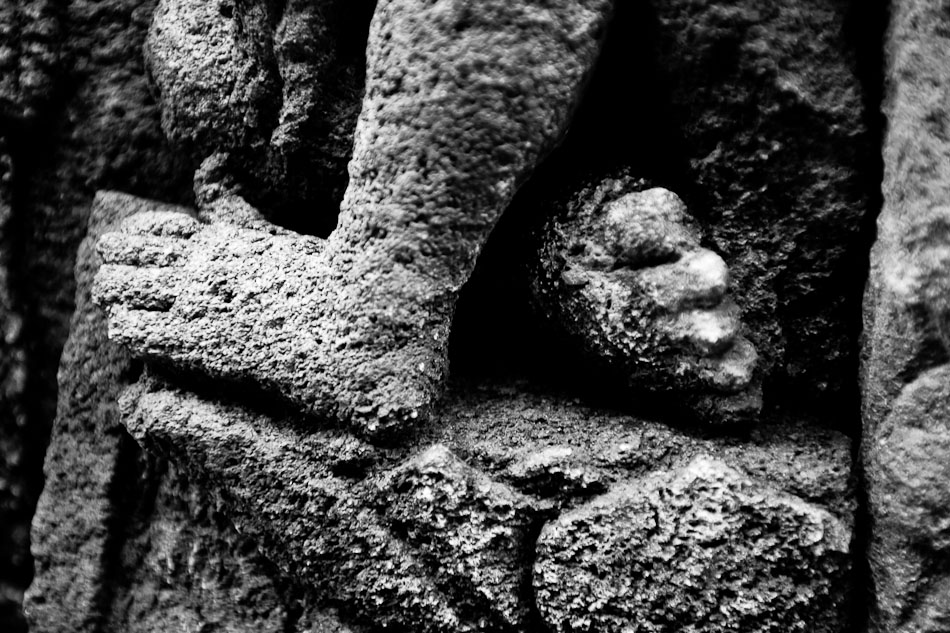
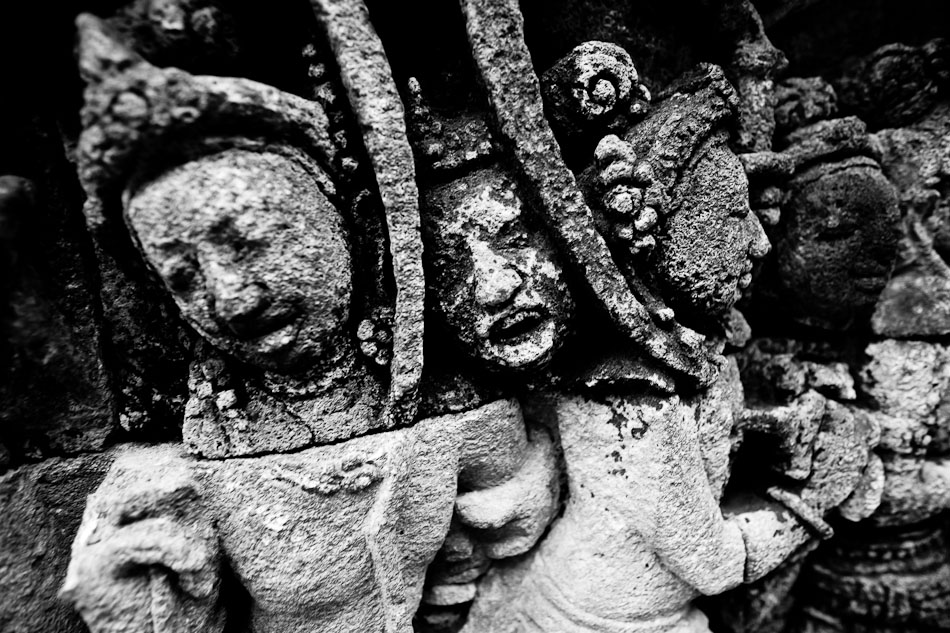
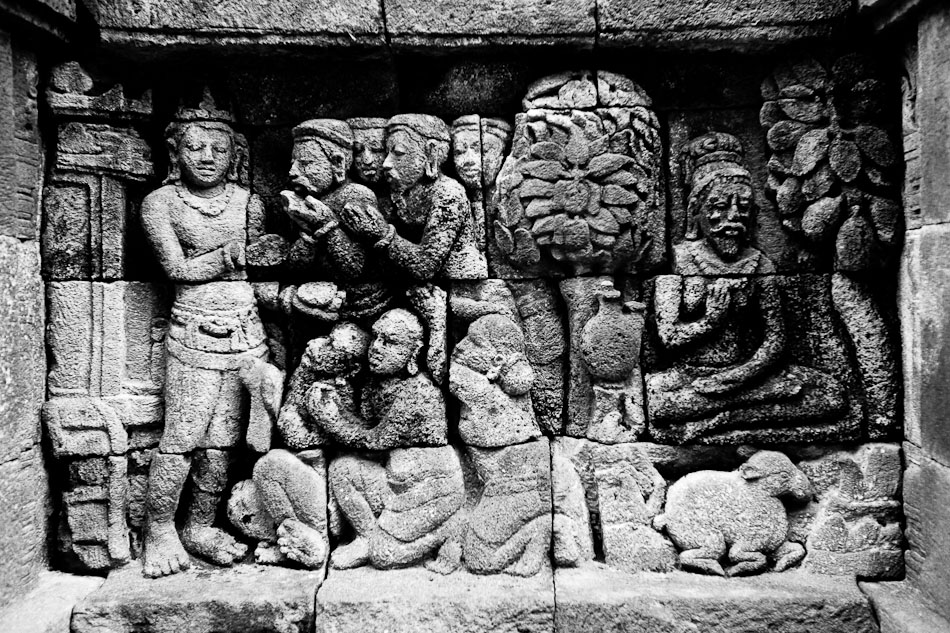
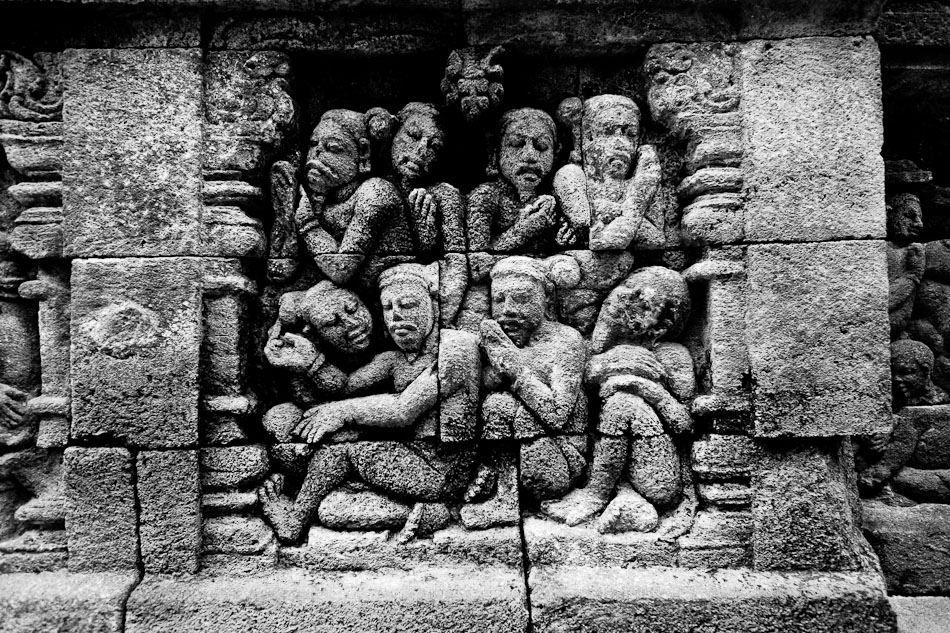
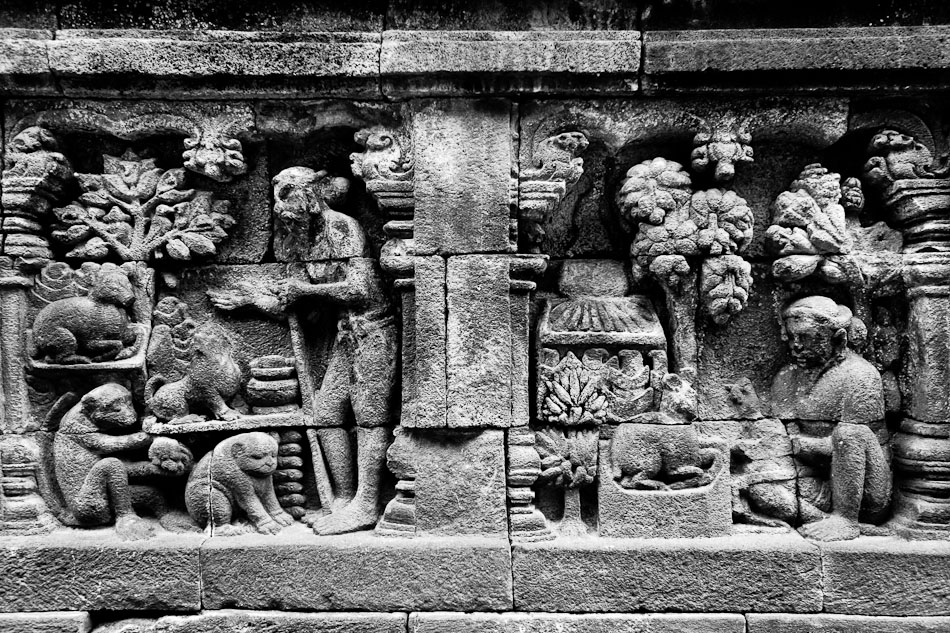
Dec 3, 2010 | Art, Travel
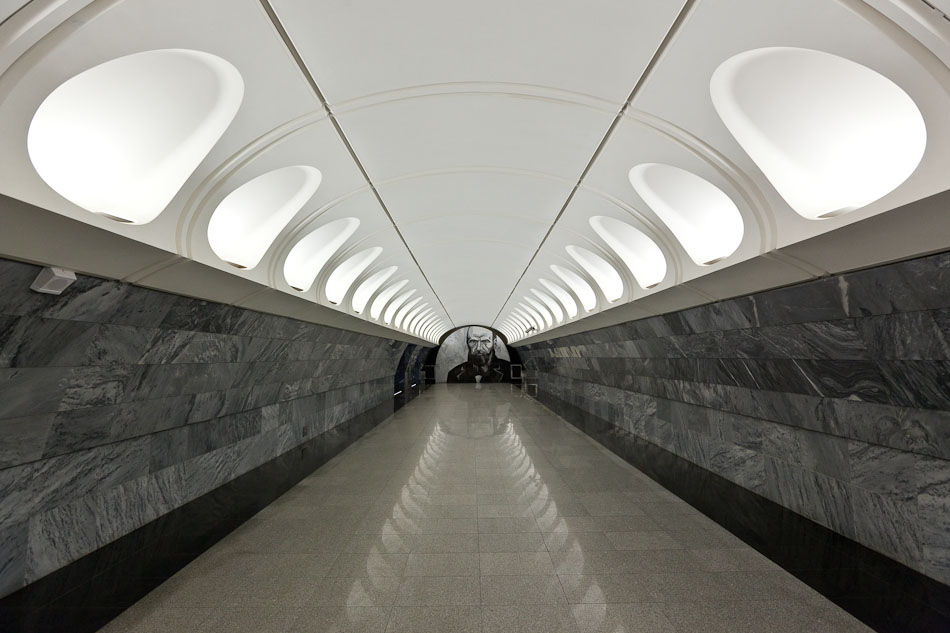
Moscow bears the historical stigma of a brooding city fringed with murder, corruption and greed. Now these grim trappings of the Russian psyche have found a home underground. The Dostoevskaya Moscow Metro station, named in honor of Russia’s dark prince of literature, delves into the most gruesome nooks of Dostoevsky’s oeuvre. The graphic nature of the murals even went so far as to delay its opening earlier this year. A prominent Russian psychologist, Mikhail Vinogradov, declared before the unveiling, “The deliberate dramatism will create a certain negative atmosphere and attract people with an unnatural psyche.” There is no doubt that death hangs heavy over the polished marble of Dostoevskaya with depictions of Raskolnikov wielding an ax against an elderly pawnbroker and her sister from Crime and Punishment and the suicide-obsessed Kirillov holding a gun to his head from The Demons. Concerned Muscovites fear the station might become a magnet for those contemplating suicide, adding to the almost eighty committed on a yearly basis in the Moscow Metro. However, after my own visit, I felt such concerns are unwarranted. The entire station inspired a sense of reverence and awe. I felt like I was meandering through a church instead of a public transportation hub. The aura of Dostoevskaya was only punctured when a train screeched into the station and let off another teeming load of commuters. The artist behind the murals, Ivan Nikolayev, remains rightfully unapologetic, “What did you want? Scenes of dancing? Dostoevsky doesn’t have them.”
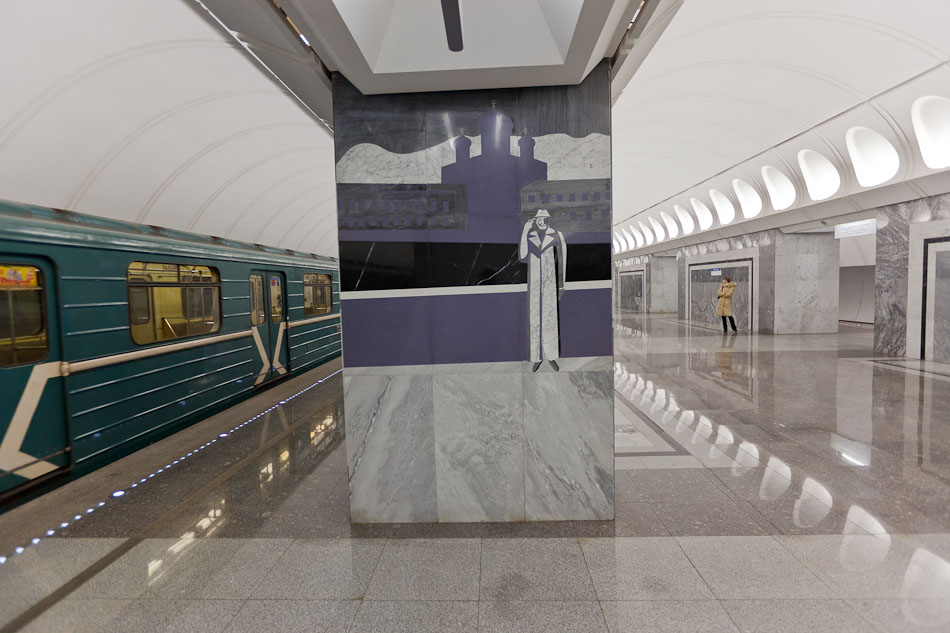
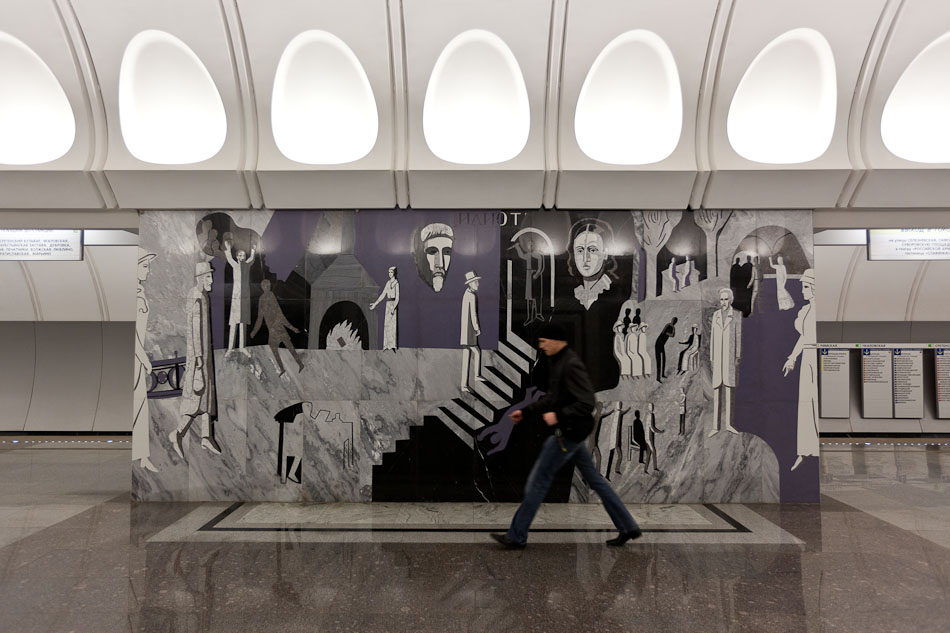

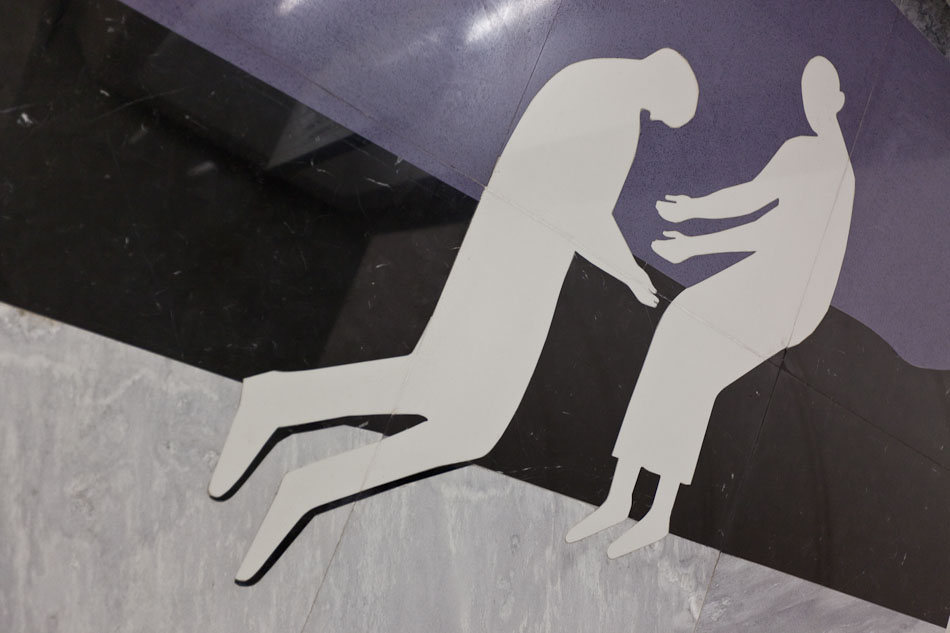
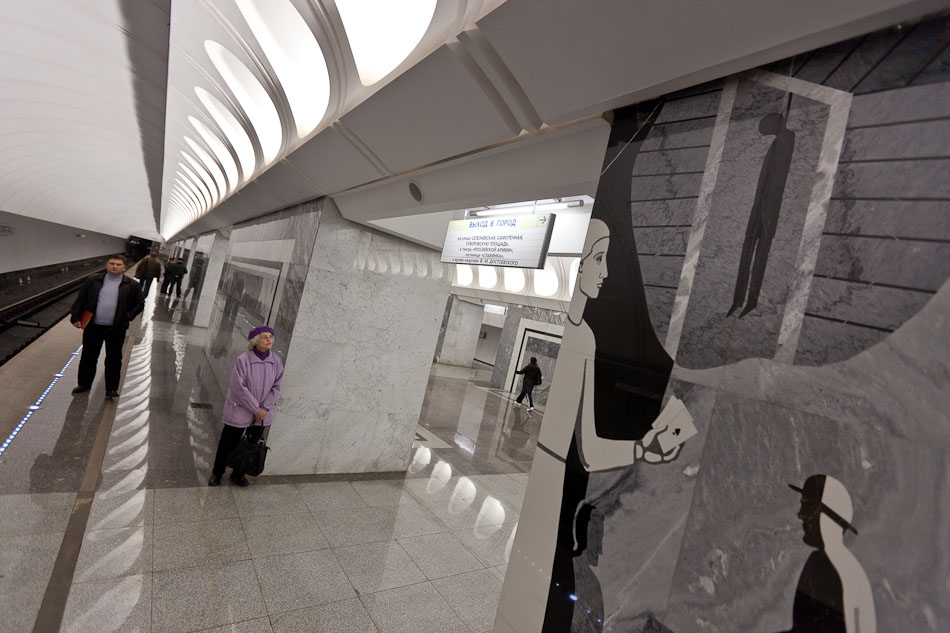
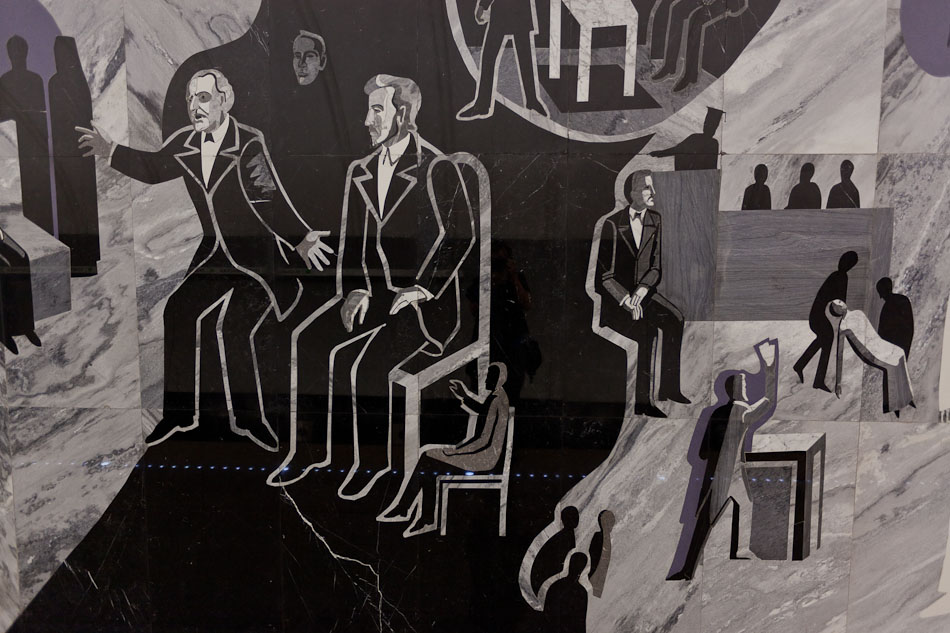
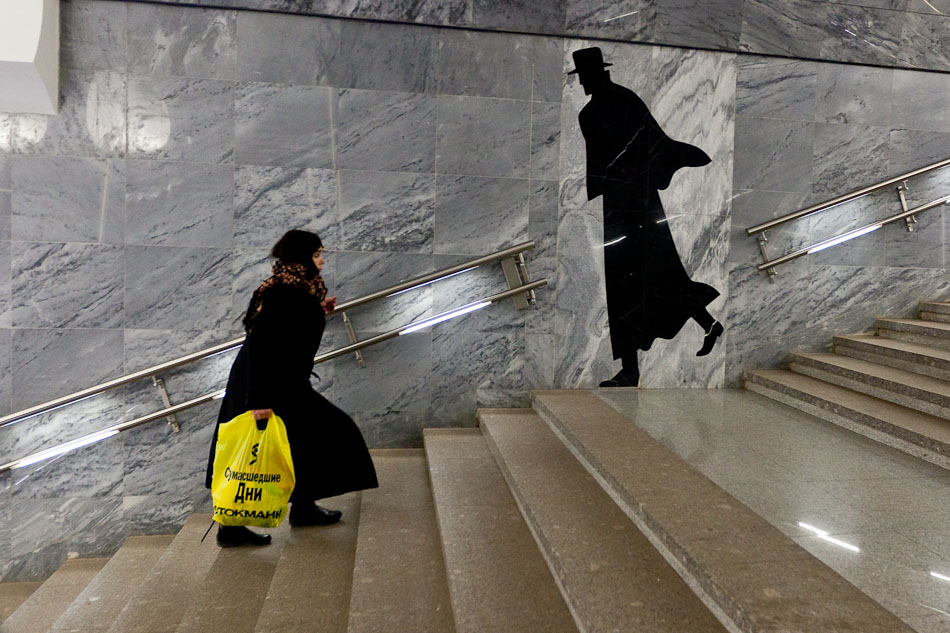
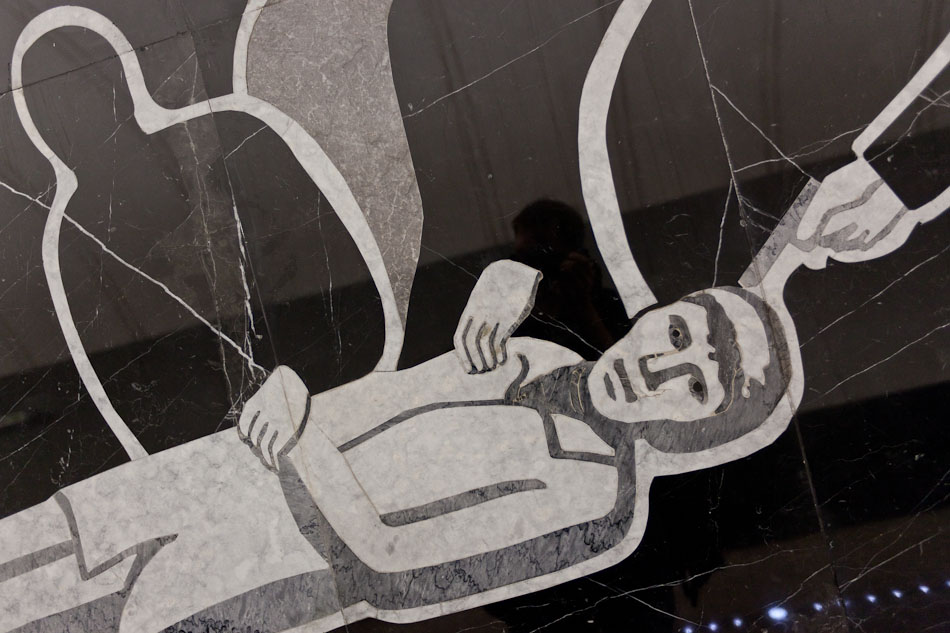
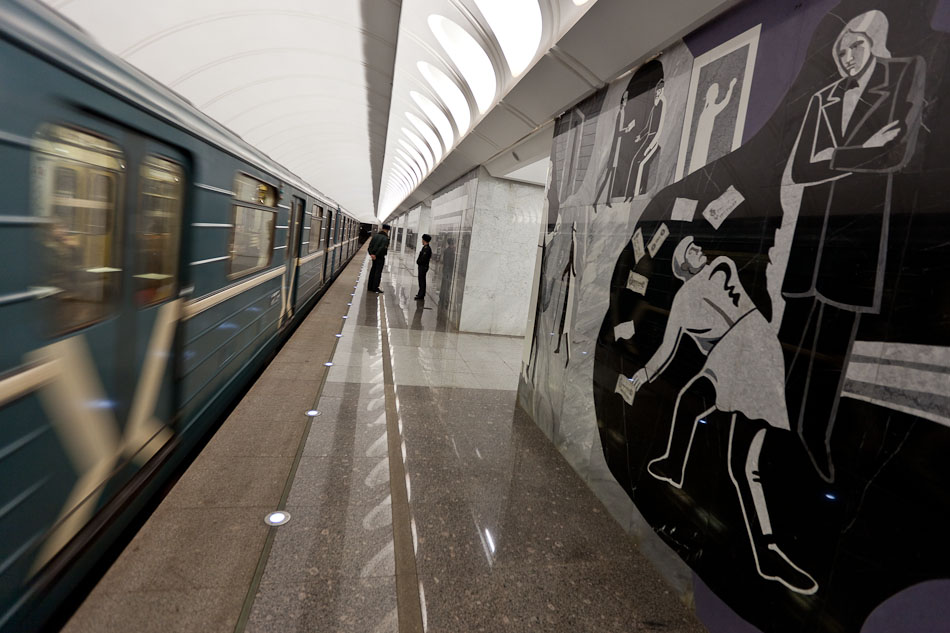
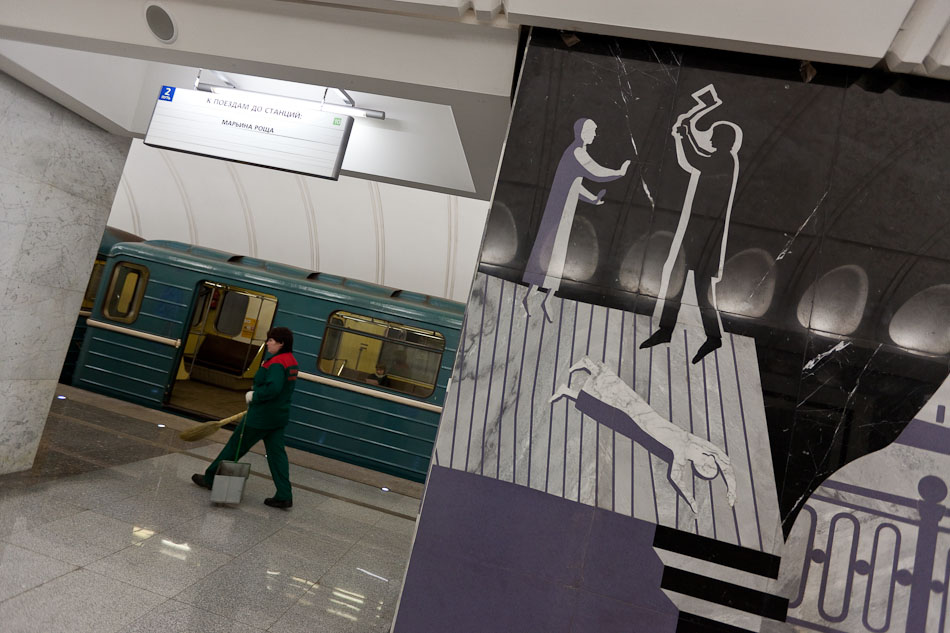
Nov 28, 2010 | Art, Travel
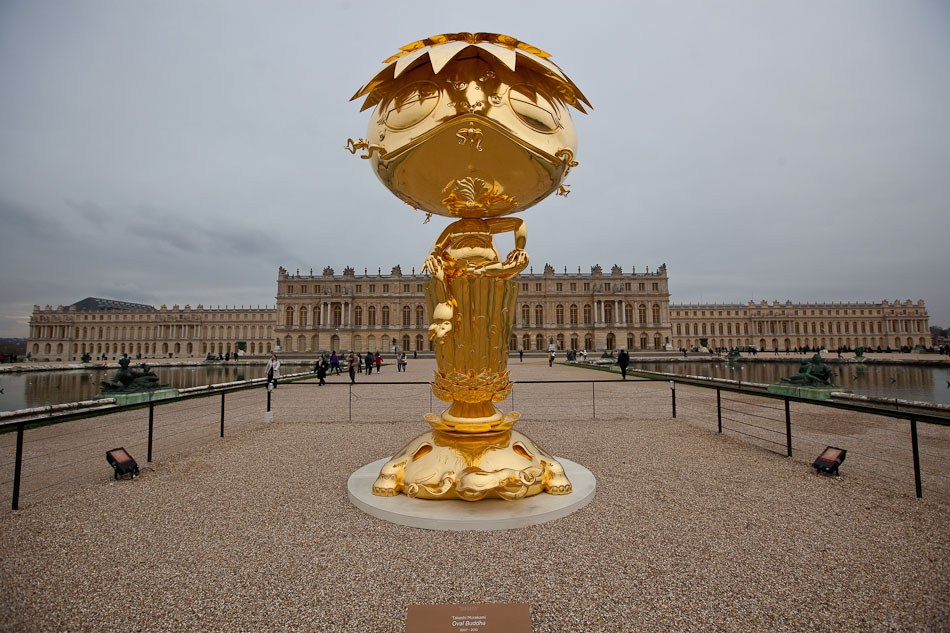
There was a spot of bother in France these past few months when Murakami took over the ornate halls and salons of Versailles with his superflat sculptures. Apparently his playful and questionably subversive installations did not go over well with a handful of descendants of Louis XIV and other royalists who consider the UNESCO World Heritage estate sacrosanct (check The Economist, The Art Newspaper and Culture Kiosque). This isn’t the first time that a contemporary art exhibit at Versailles has been called into question either. Jeff Koons’ giant lobster was met with similar grumblings in 2008. Laurent Le Bon, the curator of the show, seemed very conscious of the foregoing dissent and wrote an almost apologetic introduction to the exhibit. He tries to separate himself from the “clashes” of historical heritage and contemporary work presented at other cultural institutions. Instead he claims Murakami’s fantasy world compliments the paradise created at Versailles and allows the viewer to reassess the nature of its baroque trappings. Murakami himself implores visitors to let down their guard and take on an impish persona for the exhibit: “I am The Cheshire Cat who greets Alice in Wonderland and chatters on as she wanders around the Chateau. With my playful smile, I invite you all to the Wonderland of Versailles.” In my humble opinion, I thought the overall effect was fabulous. I know it was my first visit to Versailles, an overwhelming place in and of itself, but seeing Murakami’s hyper colorful and surreal sculptures placed amidst the intricately painted ceilings and molded walls of Versailles bowled me over. Aside from the forceful visceral nature of the exhibition, I feel that the impetus behind Murakami’s art and Versailles are very much the same. At the heart of both is a drive to cater to the most elaborate and luxurious sentiments of their respective eras. Although the aesthetics of opulence from 17th century France and 21st century Japan differ mightily, Murakami and the legendary team of artists behind Versailles created some of the most grand, over-the-top, pop imagery of their times. No matter what, the controversy behind the “clash” or “harmony” of the Murakami Versailles exhibit will continue to drive up ticket sales before it closes on December 14.
